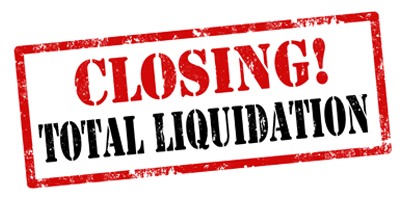The Main Principles Of Company Liquidation
The Main Principles Of Company Liquidation
Blog Article
5 Easy Facts About Company Liquidation Described
Table of ContentsEverything about Company LiquidationSome Ideas on Company Liquidation You Should KnowThe Facts About Company Liquidation RevealedThings about Company LiquidationSome Known Details About Company Liquidation
A liquidator is specifically designated to oversee the winding up of a company's affairs in order for it to be shut down normally when the firm is going insolvent. The liquidator is an impartial 3rd party who supervises the sale of business properties in order to repay any kind of impressive financial debts.Their role includes, however is not limited to: Impartial Movie director: A liquidator is charged with functioning as an objective 3rd event to supervise the entire firm liquidation procedure. Produce Declaration of Affairs: Liquidators have to create a detailed declaration of affairs record. This record is distributed to financial institutions, detailing the present financial condition of the organization at the time of its liquidation.
After the liquidation of a company, its presence is gotten rid of from Business Home and it discontinues to be a legal entity. If supervisors browsed the process without problem, there would certainly be no charges or personal liability for firm financial debts anticipated. Currently, with a tidy slate, supervisors can discover brand-new business chances, though specialist appointment is advisable.
Get This Report on Company Liquidation
If even more than 90% of all business investors agree, liquidation can take area on brief notice within 7 days, the minimum legal notice for financial institutions. Normally, the larger the liquidation and the more properties and funding the business has, the longer the procedure will certainly take.

We recognize that no two firms are the same, which is why we will make the effort to obtain to know your organization so we can recommend the finest strategy for you. We only operate in your benefits, so you can be entirely positive in the solution we provide.
The 7-Minute Rule for Company Liquidation
In the UK, there is an established procedure to folding or restructuring a limited business, whether it is solvent or bankrupt. This process is known as liquidation and can just be dealt with by an accredited bankruptcy professional (IP) in accordance this hyperlink with the Insolvency Act 1986. There are 4 major kinds of company liquidation process: Financial institutions' Volunteer Liquidation (CVL); Mandatory liquidation; Administration; and Participants' Volunteer Liquidation (MVL).

In these situations, it is necessary that the business ceases trading; if the business proceeds to trade, the directors could be held directly liable and it can lead to the insolvency expert reporting wrongful trading, referred to as misfeasance, which may bring about lawful action. The supervisors select an insolvency expert and when this has been agreed and confirmed, there is a conference with the shareholders.
Certainly, if there are no investors, this step of the procedure is not required (Company Liquidation). The IP takes control of the company and starts the firm liquidation process. The supervisors are no more involved in what takes place, consisting of the sale of the company's possessions. Nonetheless, if the directors want any one of the possessions, they can inform the IP.
Company Liquidation Fundamentals Explained
The primary difference is that the company's creditors put on the court for an ending up order which compels the bankrupt firm right into a liquidation process. Creditors take this activity as a last hotel due to the fact that they have not these details gotten payment with other types of settlement. The court assigns an insolvency specialist, also recognized as an official receiver, to perform the obligatory company liquidation procedure.
This sort of firm liquidation is not voluntary and supervisors' conduct is reported to the UK's Assistant of State once the liquidation procedure has been finished. For that reason, any supervisor that fails to accept the IP or has been entailed in director misbehavior, or a fraudulent act, might cause major effects (Company Liquidation).
It is used as a way to secure the firm from any kind of lawful activity by its financial institutions. The supervisors of the company agree to make routine settlements to settle their financial obligations over a duration of time.
5 Simple Techniques For Company Liquidation
This offers the business with time to develop a strategy moving forward to save the business and prevent liquidation. However, at this factor, directors hand control of the firm over to the selected administrator. If a company is solvent yet the directors and investors intend to shut business, a Members Voluntary Liquidation is the right choice.
The company liquidation process is taken care of by a liquidator selected by the directors and investors of the firm and they need to sign a declaration that there are no lenders remaining. The liquidation procedure for an MVL resembles that of a CVL in that properties are understood however the proceeds are distributed to the supervisors and the shareholders of the business after the liquidator's costs have been paid.
Report this page